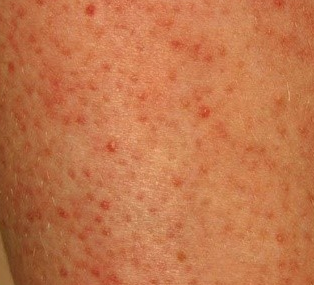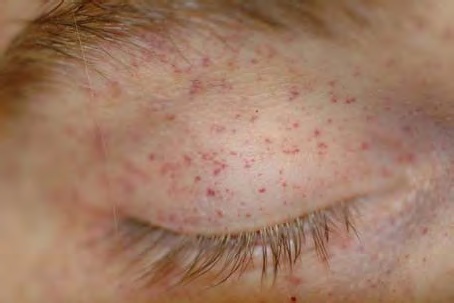

Liver spots or age spots are a common skin condition that can appear to people with the age of 40 years and above. These are flat black, dark, gray or brown marks on the skin that appear due to the aging of the skin. The process of aging can encourage the skin to develop age spots or liver spots. Take safety measure by covering your skin with cloth material to block harmful UV rays from the sun. Also, you can protect your skin against direct sunlight by using sunscreen on your skin. You can prevent and escape sunburns by staying away from direct sunlight. Other dark spots caused by UV rays on the skin include: Chronic effect of sunlight includes premature aging of the skin tissue or black age spots, cancer of the skin and permanent eye problems. On the other hand, the chronic damage of the skin tissue by UV rays can lead to a serious skin condition that is more permanent and difficult to be controlled. The acute damage of UV rays on skin tissue can be restored to normal condition by using suitable treatment method of skin care. This condition is characterized by red or dark inflammation on the skin due to acute effect of UV light. The acute effect of ultraviolet rays on skin tissue can result in skin tanning or darkening of the skin.Įrythema is an example of skin condition that develops from sunburn. Exposing your skin to direct sunlight can result in either acute or chronic damage to the skin tissue. The sun has UV rays that can hurt your skin. This can result to hyperpigmentation that can show up with black dots or patches on the affected area of the skin. are usually from people who traveled to these areas.Ĭall their doctor right away if you have any concerns.Long exposure of the skin to UV light from the sun can trigger melanocytes on the skin to increase the production of melanin on the skin. They’re found in tropical countries and cases in the U.S. These diseases include dengue, yellow fever, lassa, marburg, and ebola. Endocarditis means there’s an infection in the lining of the inner chambers of the heart and the valves.Ĭonfusion: Petechiae - along with confusion - could indicate that your child has Rocky Mountain spotted fever, an infection caused by the bite of a tick.Ĭhange in consciousness:Some infections caused by viruses, known as viral hemorrhagic fevers, can cause changes in consciousness as well as show signs of petechiae. Trouble breathing: If your child has shortness of breath or trouble breathing along with petechiae, it can be a sign of a serious condition called endocarditis. If your child has the spots, look out for these other symptoms: Other serious illnesses can also cause petechiae in your child. Blood and urine tests may help pinpoint the cause of the spots. The doctor will examine your child, look at the rash, and ask about their symptoms and recent illnesses. Have a doctor check these symptoms right away. Petechiae with a fever in children can be a sign of a serious infection like meningococcal disease. Phenytoin and valproic acid, which are seizure medications Petechiae may be a side effect of drugs like: Reactions to certain medicines can cause these spots, too. Thrombocytopenia, low levels of platelets that help your blood clotĪ lack of vitamin C (scurvy) or vitamin K in your diet can also lead to petechiae.

Idiopathic thrombocytopenic purpura (ITP), an immune disorder that affects blood clotting Hemolytic-uremic syndrome (HUS), a group of blood disorders Viral hemorrhagic fevers like dengue, Ebola, and yellow feverīlood and immune disorders can also cause petechiae, such as: Sepsis, a serious, body-wide response to an infection Henoch-Schonlein purpura, a disease that causes inflammation in the small blood vessels Viral infections like cytomegalovirus ( CMV), endocarditis, mononucleosis, and the fluīacterial infections such as meningitis, Rocky Mountain spotted fever, scarlet fever, and strep throat Many infections with bacteria, viruses, or fungi can cause these spots, too, including: Petechiae may also form on your face, neck, or chest if you strain intensely or for a long time when you do things like: Leaking in the capillaries could be due to an illness or a medicine you take. They also carry waste away from your organs and tissues. They help move oxygen and nutrients from your bloodstream to your organs and tissues.

Capillaries are the tiniest blood vessels that connect arteries to veins. Petechiae are a sign of blood leaking from capillaries under your skin.


 0 kommentar(er)
0 kommentar(er)
